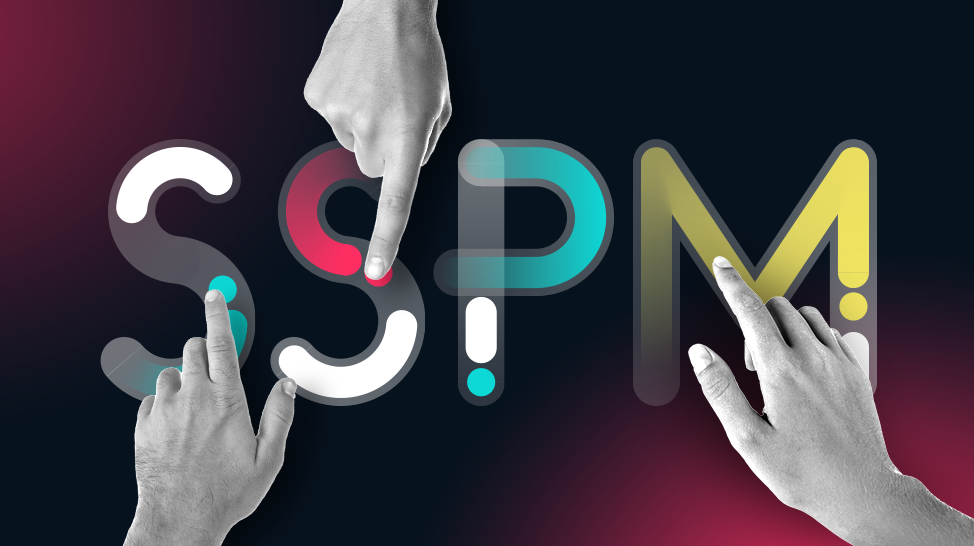The SaaS app attack surface has widened and recent research shows that up to 63 percent of organizations have dealt with security incidents because of a SaaS misconfiguration. Lack of visibility, thousands of configurations for the security team to monitor and remediate, and too many departments with access are the leading causes of SaaS misconfigurations. There are unrealistic expectations on security teams and app owners (who sit outside the security team) to manually handle every app, configuration, and user role.
The Emergence of SSPM
Gartner created the SSPM category in 2020 to address these challenges to refer to tools that enable security teams to have full and continuous visibility of SaaS security settings and configurations. Up until this category emerged, Cloud Security Posture Management (CSPM) and Cloud Access Security Broker (CASB) were considered able to secure the Saas stack. However, CSPM focuses on infrastructure-as-a-service security solutions, where SSPM is specifically catered to SaaS app technology. Meanwhile, while CASB and SSPM are both designed to address security issues within SaaS applications, CASB falls short as it identifies incidents after they happen. SSPM offers organizations a SaaS-specific, preventative solution that allows them to gain full visibility of their SaaS stack security.
According to our 2022 SaaS Security Survey completed in conjunction with CSA (Cloud Security Alliance), SSPM has become the top priority with 62% of companies currently using or planning to implement in the coming 24 months.
What Are the Key Features an SSPM Should Provide?
From the breadth of applications supported to the depth of its security checks, an SSPM provides organizations continuous, automated surveillance of all SaaS apps, alongside a built-in knowledge base to ensure the highest SaaS security hygiene. When comparing SSPM solutions there’s a few key features to keep in mind to make sure your business is getting the best SaaS security.
A Vast Array of Applications Supported
When evaluating different SSPM the first thing to look out for is its ability to integrate all your needed SaaS apps. Every organization uses at least a handful of SaaS apps if not hundreds, each with their own unique settings. Any app can pose a risk and smaller apps often serve as a gateway for an attack, this is why it’s crucial to have every app to be fully integrated. As a rule of thumb, look for an SSPM with a minimum of 30 integrations that are adaptable and able to run checks on every data type to protect against misconfigurations.
Comprehensive & Deep Security Checks
The other vital component to an effective SSPM is the expanse and depth of the security checks. Every SaaS app has its list of domains to monitor, such as: identity and access management, malware protection, data leakage protection, auditing, access control for external users, and so on.
This goes hand in hand with continuous monitoring and remediation. Part of an SSPM’s job is to not only detect the threats but to combat them. Remediating issues in business environments is a complicated and delicate task. The best SSPM solution should provide context about each configuration, enable you to easily monitor, and set up alerts. When alerts do happen, the platform should map out remediation. This way, when misconfigurations do happen, a business is left vulnerable for a minimal window of time.
User & Device Inventory
Part of what enables an SSPM solution to provide full visibility is its user and device inventory. User inventory takes into account all the different SaaS apps used by different employees and the level of access which they have. When a user fails a security check, security teams are immediately notified to enable a seamless user management and investigation across all SaaS apps. Device inventory allows security teams to see which devices have access to company SaaS apps and manage the risk based on the device hygiene score.
Compliance
An effective SSPM maps out the security controls of major compliance frameworks such as SOC 2, ISO 27001 and NIST Special Publication 800-53, in order to provide in-depth security checks by app, user, severity or any other metric indicating misconfigurations. When misconfigurations or failed security checks do happen, security teams are not only alerting immediately, they also get a step-by-step remediation description to see exactly how to fix the SaaS misconfiguration
3rd Party App Access
Another aspect that is growing in importance on the SaaS security landscape is that of 3rd party app access. Users don’t think twice about connecting an app with their Google Workspace or M365 but these automatic actions are becoming a threat in the corporate cybersecurity landscape. That being said, 3rd party app access is also a key feature that helps boost companies’ productivity and enable remote work. Adaptive Shield, for example, gives security teams visibility into these business-critical apps and reviews the permission and access levels of different 3rd party apps being integrated to reduce the severity of a threat.
We are honored that Gartner has named Adaptive Shield a 2022 Gartner Cool Vendors™ in Application Security: Protection of Cloud-Native Applications. We believe that this is a powerful step not just for Adaptive Shield, but for the field of SaaS Security Posture Management (SSPM).


















